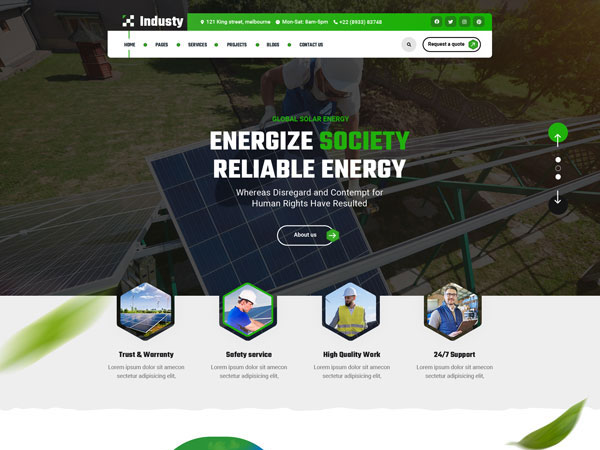Mastering Precise A/B Testing for Landing Page Optimization: Deep Technical Strategies and Actionable Frameworks
Optimizing landing pages through A/B testing is a cornerstone of effective conversion rate optimization (CRO). While foundational knowledge covers what elements to test, this guide delves into the how exactly to implement precise, data-driven, and technically sound tests that deliver actionable insights. Building on the broader context of «{tier2_theme}», we explore advanced methodologies and step-by-step processes that distinguish beginner efforts from expert-level experimentation.
1. Analyzing and Prioritizing Elements to Test on a Landing Page
a) Identifying High-Impact Elements Using Data-Driven Methods (Heatmaps, Click-Tracking)
Begin with quantitative analysis to pinpoint where users focus their attention. Use tools like Hotjar, Crazy Egg, or VWO to generate heatmaps and click-tracking reports. Pay special attention to:
- Hotspot zones: areas with high click density.
- Scroll maps: sections users rarely reach.
- Click patterns: unexpected behavior indicating confusion or distraction.
“Heatmaps reveal where your visitors are truly engaging—beyond what A/B tests alone can tell.”
b) Creating a Testing Hierarchy: What to Test First Based on Potential Impact
Prioritize elements that influence user decision-making and have high visibility. For example, a compelling headline or primary CTA button often yields more lift than secondary elements. Use a matrix approach to score elements by:
| Element | Impact Potential (1-10) | Ease of Testing | Priority Score |
|---|---|---|---|
| Headline | 9 | High | 8.1 |
| CTA Button | 10 | Medium | 8.0 |
c) Using User Feedback and Qualitative Data to Prioritize Testing Areas
Conduct user interviews, surveys, and session recordings to uncover pain points not visible through quantitative data. For instance, if users express confusion over form fields, prioritize testing different form layouts or field counts. Use tools like Lookback for live user feedback, and always triangulate qualitative insights with heatmap data for comprehensive prioritization.
2. Designing and Setting Up Precise A/B Tests for Landing Pages
a) Developing Clear Hypotheses for Each Test Element
A well-structured hypothesis guides your testing process. For example:
“Changing the CTA copy from ‘Get Started’ to ‘Claim Your Free Trial’ will increase click-through rates by addressing user motivation.”
Ensure hypotheses are specific, measurable, and based on prior data. Use the scientific method—state your assumption, define your independent variable, and determine the expected outcome.
b) Crafting Variations: Best Practices for Headlines, CTA Buttons, and Layouts
When creating variations:
- Headlines: Test different value propositions, emotional appeals, or clarity levels. Example: “Save 30% Today” vs. “Exclusive Offer for New Customers.”
- CTA Buttons: Vary wording, color, size, and placement. Use contrasting colors that align with your branding but stand out.
- Layouts: Experiment with single-column vs. multi-column designs, or reposition key elements to optimize visual flow.
c) Technical Setup: Using A/B Testing Tools (e.g., Optimizely, VWO) — Step-by-Step Guide
Implementing tests involves:
- Creating Variations: Use the tool’s visual editor or code editor to design different versions.
- Setting Up Experiments: Define experiment parameters—traffic allocation (e.g., 50/50 split), goals (clicks, conversions), and URL targeting.
- Implementing Trackers: Insert pixel or event tracking snippets to capture user interactions accurately.
- Launching and Monitoring: Start the test, monitor for anomalies, and ensure tracking is functioning before reaching statistical significance.
“Always verify your implementation with test traffic—nothing derails a test faster than incorrect setup.”
d) Ensuring Test Validity: Sample Size Calculations and Statistical Significance
To determine the required sample size:
| Parameter | Description & Calculation |
|---|---|
| Baseline Conversion Rate | Your current conversion rate, e.g., 5% |
| Minimum Detectable Effect | The smallest lift worth detecting, e.g., 10% |
| Statistical Power | Typically 80-90%, representing confidence level |
| Significance Level (α) | Usually 0.05 for 95% confidence |
Use online calculators like Sample Size Calculator or statistical tools (e.g., G*Power) to derive the minimum sample size. Remember, too small a sample risks false positives/negatives; too large leads to unnecessary delays.
3. Implementing Advanced Testing Techniques for Specific Elements
a) Testing CTA Wording and Placement Strategies — How to Structure Variations
To maximize impact:
- Wording: Use action-oriented verbs, emphasize value, or create urgency. For example, “Download Now” vs. “Get Your Free Ebook.”
- Placement: Test above-the-fold vs. below-the-fold positioning. Consider multi-CTA layouts where secondary buttons support primary actions.
- Color and Size: Use contrasting colors aligned with branding but designed to stand out. Larger buttons generally increase clicks, but test for diminishing returns.
b) A/B Testing Image and Video Content: Technical Considerations and Best Practices
When testing visual content:
- File Optimization: Use compressed images (JPEG, WebP) to ensure fast load times, preventing skewed results due to slow performance.
- Technical Compatibility: Test across browsers and devices to verify visual consistency.
- Content Relevance: Match images/videos to user intent; avoid stock images that seem generic.
- Variation Strategy: For videos, test different thumbnail images, lengths, or call-to-action overlays.
“Visual content is often the most immediately engaging element—test variations systematically for maximum impact.”
c) Testing Form Length and Fields: How to Systematically Vary and Measure Impact
Approach:
- Field Reduction: Remove non-essential fields to increase completion rate. Use analytics to identify drop-off points.
- Field Grouping: Organize related fields into logical groups to reduce perceived effort.
- Progress Indicators: For multi-step forms, test different progress bar designs or step labels.
- Validation Messages: Test real-time validation vs. delayed validation to improve user confidence.
Use form analytics tools like FullStory or Hotjar form analysis to identify where users abandon and tailor your tests accordingly.
d) Dynamic Content Testing: Personalization and Segmentation Strategies
Implement server-side or client-side personalization based on segment data:
- Geo-targeting: Show localized offers or language-specific content.
- Behavioral Segmentation: Present different messaging to returning visitors vs. new visitors.
- Device Adaptation: Adjust layout or content based on device type.
Use tools like Optimizely or VWO’s personalization modules to create and test these dynamic experiences at scale. Always validate that personalization rules trigger correctly before running full-scale tests.
4. Analyzing Test Results for Granular Insights
a) Interpreting Data Beyond Averages: Segment-Level and Device-Specific Results
Averages can conceal critical variations. Break down data by:
- Device Type: Desktop, tablet, mobile—each may respond differently.
- Traffic Source: Organic, paid, referral—different audiences may require tailored approaches.
- User Segments: New vs. returning visitors, geographic regions.
Use your testing platform’s segmentation tools or export data to analyze these differences. For example, a variation that improves desktop conversions by 15% may only boost mobile by 2%—guiding targeted adjustments.
b) Using Confidence Intervals and P-Values to Make Data-Driven Decisions
Apply statistical metrics rigorously:
- Confidence Intervals (CIs): Quantify the range within which true conversion rates likely fall. Narrow CIs indicate higher certainty.
- P-Values: Ensure p-values are below your alpha threshold (commonly 0.05) before declaring significance.
Many testing tools automate these calculations, but understanding their interpretation prevents premature conclusions.







